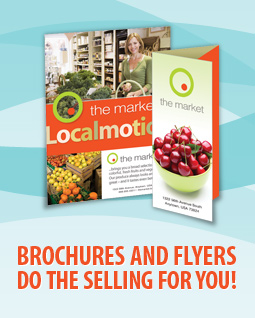More Tech Tips
- • Print Troubleshooting Tips for Adobe InDesign
- • Ditch the Typos with InDesign’s Dynamic Spellcheck Settings
- • Unlocking Design Flow Secrets: Expert Advice for Print Projects
- • Packaging Your Files for Print: 5 Simple Steps for Flawless Printing Results
- • 6 Tips for Creating an Impossible-to-Ignore Cover
- • A Perfect Landing Place
- • How to Rebrand Your Business in 7 Steps
- • Add Beauty and Balance Using the Golden Ratio and the Perfect Spiral
Unlocking Design Flow Secrets: Expert Advice for Print Projects
When it comes to designing a book, booklet, or catalog, achieving the perfect "flow" is paramount.
In the words of the renowned book, "Design Basics Index," flow is what separates successful layouts from the rest. Similar to music, a layout must possess a seamless flow to truly captivate its audience.
To help you achieve exceptional flow in your designs, here are five key considerations.
1. Consistency is key.
In design, even the smallest details matter.
Something as simple as tapering a line or skillfully distributing elements of interest can significantly impact flow. Conversely, any disruptions in flow will grab attention for the wrong reasons.
2. The significance of the gutter.
The space between two adjoining pages, known as the gutter, plays a vital role in your design. How you utilize this space can make or break the overall impact.

To direct attention effectively, ensure that images face the intended page. For instance, if featuring a running subject, position the photo towards the inside of the page rather than at the edge. Consider crossing the gutter with an image to maintain cohesiveness and entice readers to continue reading.
3. Direction matters.
If you're accustomed to reading from left to right and top to bottom, you'll naturally expect the same flow in your design.
Make it a priority to align the visual flow of your design with this expectation.
4. Cohesion is crucial.
When designing both the cover and the interior of a book, it's essential to maintain a cohesive visual experience.
Establish connections between these two elements to demonstrate thoughtful and professional design. Consistent typography, well-defined margins or grid systems, repeated imagery, and complementary visuals all contribute to this cohesion.
Be mindful of avoiding overwhelming visual elements that hinder the eye's movement and instead strive for a harmonious integration.
5. Building a visual bridge.
Efficiently guiding the viewer's eyes from one design element to another is essential.
Consider creating a bridge that seamlessly connects different areas of the layout. For example, overlapping the headline into the image area can establish a vertical connection, ensuring continuity and cohesion throughout the ad.
As you wrap up your design process, ask yourself key questions, such as:
- Where do my eyes naturally travel?
- Does the design feel balanced?
- How can I further enhance the visual flow?
Dedicate your efforts to address these queries efficiently within your design. For more valuable design tips and tricks, check out more articles from our Ideas Collection or contact us for a free consultation.


Design Basics Index
by Jim Krause
Design Basics Index is full of inspiration for those working in the graphics industry or those seeking to find a way in. The book guides the reader through a progression of visual and conceptual theories to samples and exercises that will stretch the designer's imagination and creativity.




Share this